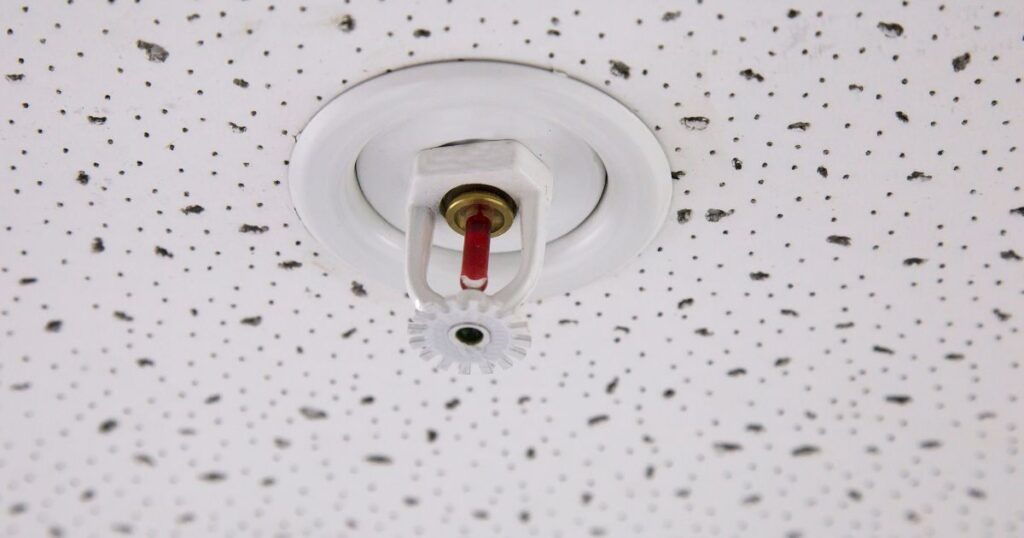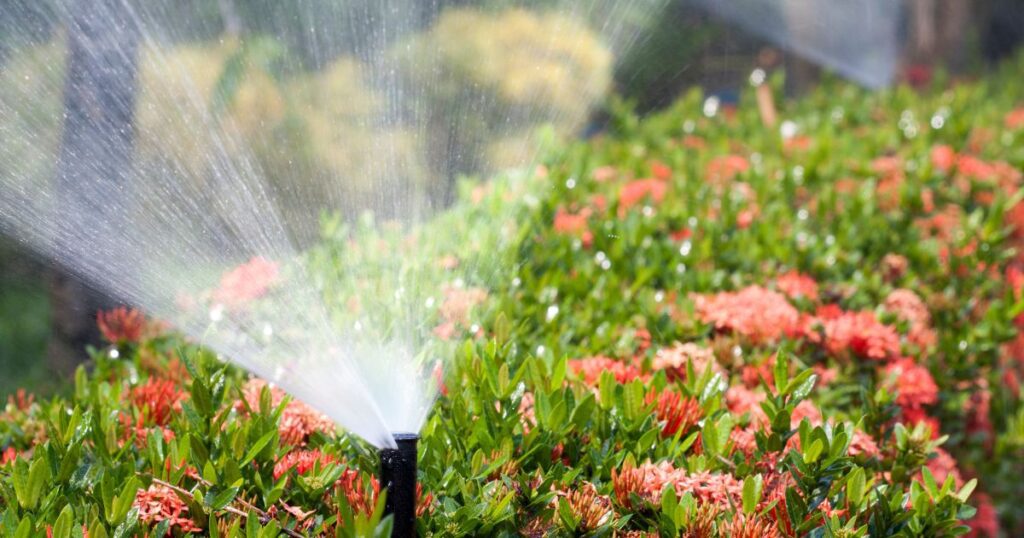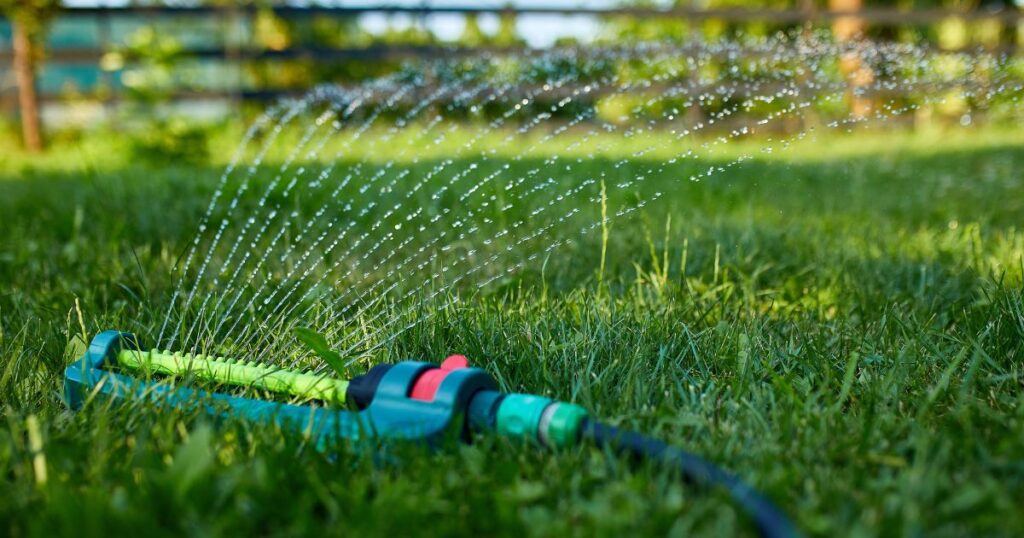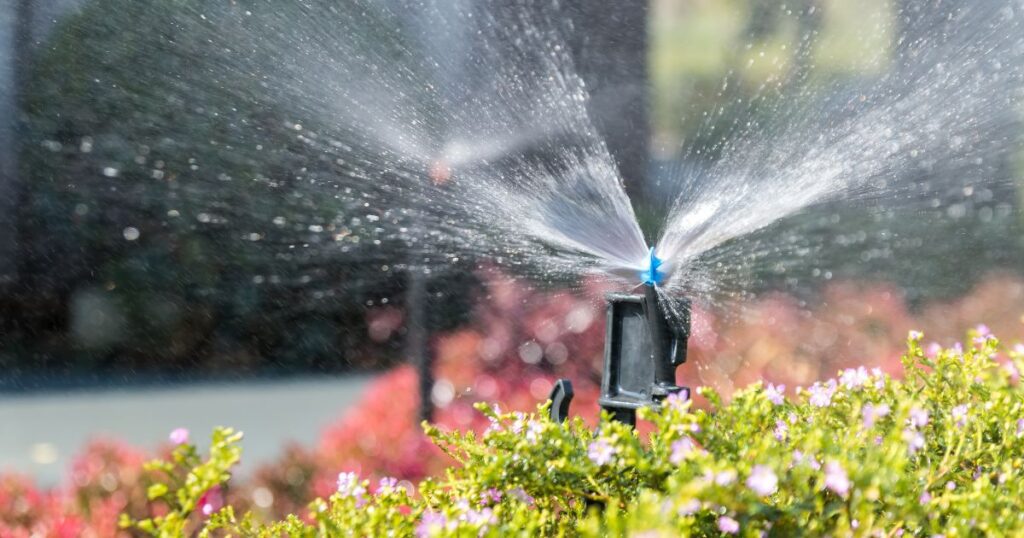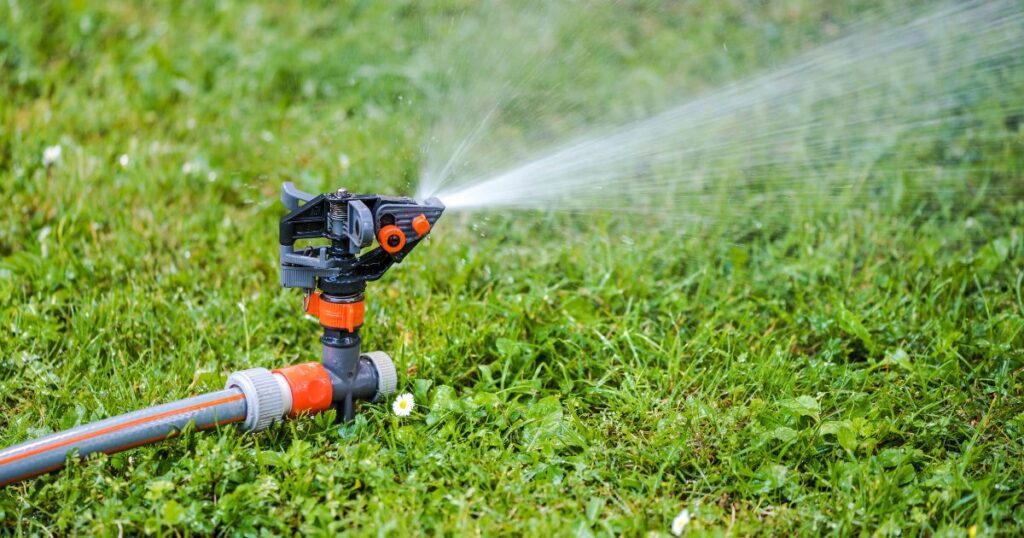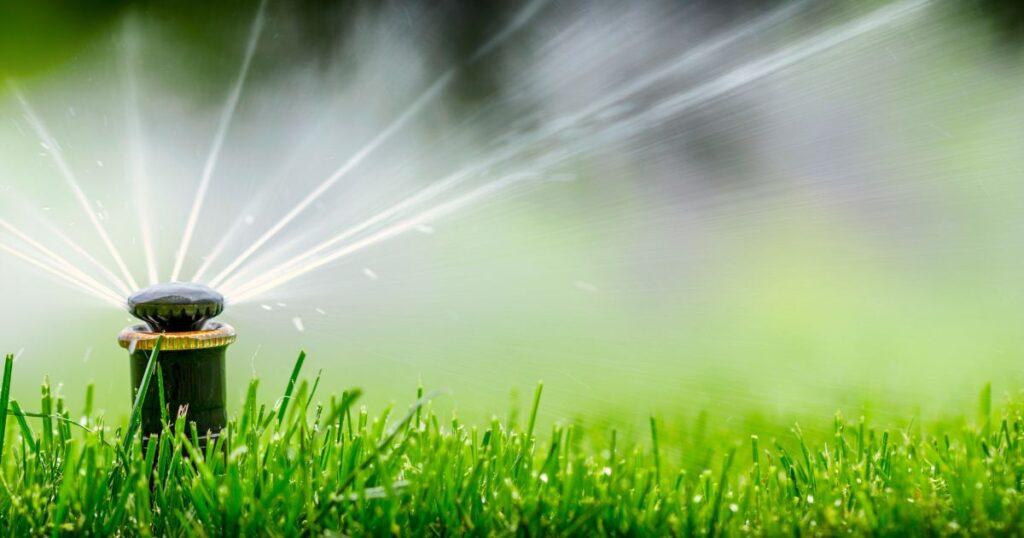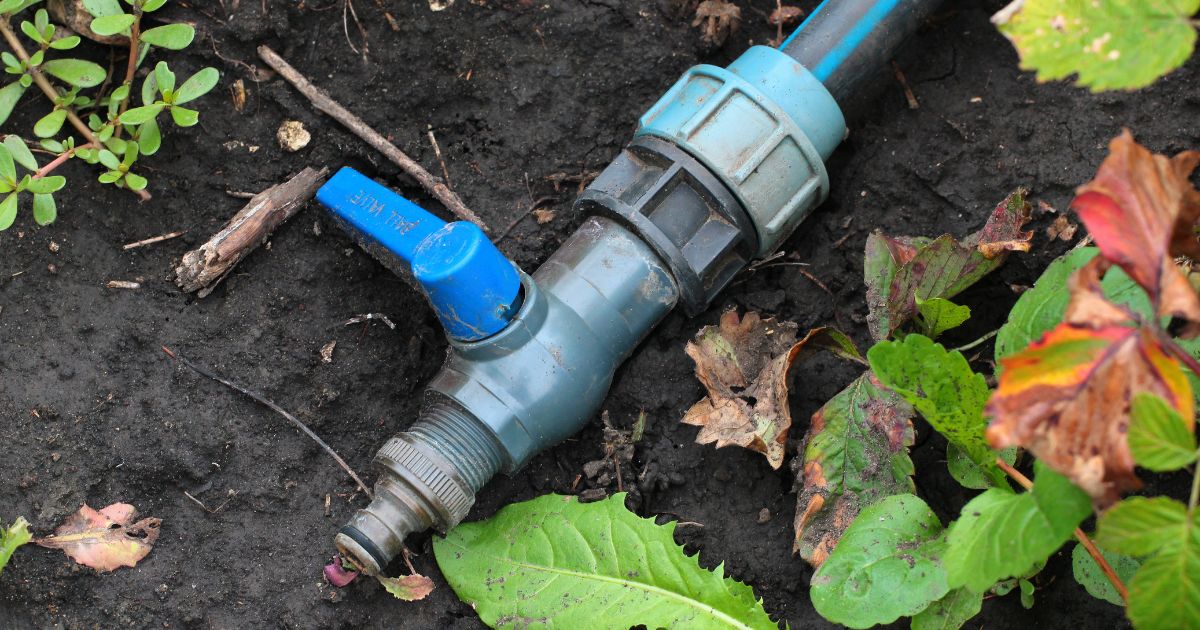
Are you on a quest to uncover the mysterious whereabouts of your sprinkler valve? Fear not, brave reader, for we have the knowledge you seek! In this exciting adventure, we’ll guide you through the twists and turns of your landscape to unveil the hidden sanctuary of the elusive sprinkler valve. Get ready to become a Valve detective and unlock the secrets that lie beneath the surface. So, grab your magnifying glass, put on your detective hat, and let’s embark on a journey to locate that elusive sprinkler valve!
To locate a sprinkler valve, start by checking near the water source, such as the main water line or meter. Follow the path of the sprinkler system pipes, looking for a box or cover in the ground. Use a valve locator tool or a metal detector to help pinpoint the exact location of the valve.
Importance of Knowing How To Locate A Sprinkler Valve
Locating a sprinkler valve is crucial for maintaining an efficient irrigation system. Sprinkler valves are responsible for controlling the flow of water to your sprinkler heads, ensuring that your lawn or garden receives the appropriate amount of water. Without properly functioning sprinkler valves, your plants may not receive enough water, causing them to wither and die.
On the other hand, if too much water flows through your sprinkler heads, it can lead to wasted water and higher utility bills. In addition to ensuring optimal watering for your plants, locating a sprinkler valve can also save you money and time.
If you are experiencing issues with low pressure or no water flow in certain areas of your lawn or garden, it could be due to a faulty valve. By finding and repairing the issue promptly, you can avoid expensive repairs down the line.
Overview of the process
Locating a sprinkler valve may seem like a daunting task at first, but with some basic knowledge and tools, it can be done easily. The process involves identifying the valve box where the valves are located and opening it up to access the valves themselves. Once inside the box, you will need to look for clues that indicate where each valve is located.
If all else fails in locating a particular valve through visual inspection alone, then other methods, such as using metal detectors or following pipes from your mainline, can be used in order to locate them easily. The following sections will walk you through each step of this process in detail, offering tips on how best to practice when performing these steps so that you can quickly locate any necessary valves without spending hours digging around in your yard, looking for them blindly.
The Importance of Identifying the Valve Box
Locating the valve box is the first step in finding your sprinkler valve. The valve box is a small, usually green or black box that contains the valves that control your sprinkler system.
This box protects the valves from damage and helps to keep them organized and easy to access. Without locating the valve box, it is impossible to locate the sprinkler valve.
What is a Valve Box?
A valve box is a small, usually plastic or concrete structure that houses the irrigation system valves. These boxes are placed at ground level and are designed to protect valves from damage and environmental factors such as sun, wind, and water. In addition to protecting valves, they also make it easier for homeowners to locate their sprinkler system components.
Tips on How to Locate Your Valve Box
Finding your valve box can be challenging if you don’t know where it’s located. Here are some tips on how to locate your valve box:
1. Use blueprints: If you have blueprints of your home or property, they may indicate where the valve box is located.
2. Look for an irrigation map: An irrigation map can provide a layout of your property’s irrigation system, which may include details about where your valve boxes are located.
3. Check near water sources: Valve boxes are typically located near water sources such as a tap or hose bib.
4. Look for signs of digging: If you know when your irrigation system was installed, look for any signs of digging in that area, as this could indicate where your valve boxes were placed.
5. Use a metal detector: Some modern-day metal detectors have sensors sensitive enough to detect buried plastic objects like PVC pipes connected with sprinklers, thereby hinting towards the possible location of value boxes.
Overall, locating your sprinkler’s value will take some time, but identifying where the valve box is located will ensure that you can start the process. The next step is to open up the valve box and begin your search for the sprinkler valve.
Step 2: Open the Valve Box
Tools needed to open the valve box
The first thing you need to do when trying to locate a sprinkler valve is to find the valve box. Once you have found it, you will need some tools to open it up.
You will require a special tool that is often called a “valve box key” or “curb key.” These are sold at hardware stores and home improvement centers, and they come in different sizes.
When purchasing a valve box key, make sure that it is long enough for you to reach down into the valve box without having to bend over too much. You may also want to consider getting one with a T-shaped handle, as this makes it easier to turn the key and open the lid.
RELATED: How To Move A Sprinkler Head: A Step-by-step Guide
Precautions to take when opening the valve box
Before opening up the valve box, there are some precautions that you should take. First of all, make sure that your hands are clean and dry because any dirt or moisture on your hands can contaminate the inside of the valve box.
Next, check for any signs of insects, such as wasps or bees, around the area where the valve box is located. If there are any nests nearby, make sure that they have been removed before attempting to open up the valve box.
When using your valve box key, be careful not to apply too much pressure because this can cause damage to both the lid and the key itself. Slowly turn the key until you feel resistance, and then gently lift up on it until the lid pops off.
Once opened, check inside for any signs of damage, such as cracks or other defects in either the lid or bottom of the valve box. If you notice anything out of place, it’s best not to proceed with locating your sprinkler valves until these items have been fixed properly.
When trying to locate a sprinkler valve, it’s important to have the right tools and take proper precautions when opening up the valve box. With these tips in mind, you’ll be well on your way to finding your sprinkler valves quickly and efficiently.
Step 3: Look for Clues
Signs that indicate where the sprinkler valve is located
When trying to locate a sprinkler valve, it’s important to keep an eye out for any signs that may indicate its location. One of the most common signs is a wire or cable coming out of the ground leading to the valve box.
This wire or cable is usually connected to the solenoid, which controls the valve and tells it when to turn on and off. Another sign that can help you locate a sprinkler valve is a small depression in the ground where water has been collecting.
This can be caused by a leak in one of your sprinkler system’s pipes, which could mean that there is a valve nearby. If you notice any areas of your yard that are consistently damp or soggy, this could also be an indication of a leaky sprinkler system and might lead you closer to finding the valve.
Keep an eye out for green grass as well – if one section seems especially lush compared to others nearby, this could be another indicator that there’s a leak somewhere in your irrigation system, causing it to receive more water than intended. If you have other landscaping features like shrubs or trees near your lawn’s perimeter, take note if they seem healthier or more vibrant than others nearby; these plants could be getting extra hydration from an unknown source.
Common locations for sprinkler valves
While each lawn is unique in its layout and irrigation system design, there are several common locations where sprinkler valves are often found: 1) Near property lines: Valves are often found at the boundary between two properties since they’re convenient spots for accessing both yards’ watering systems.
2) Close to buildings: Check around any buildings on your property – valves are sometimes installed close by, so they’re easily accessible and won’t be damaged by lawnmowers or other equipment. 3) Near water sources: If your sprinkler system is connected to a water source such as a well, valve boxes may be located near the water source itself.
4) At changes in elevation: Sprinkler valves are often installed at points where the ground level changes, like at the top or bottom of a slope. This helps regulate water pressure across the system.
5) In clusters: If you have multiple sprinkler zones in your yard, you might find them grouped together in valve boxes that house several valves at once. Keep an eye out for large metal covers or lids that could indicate this type of setup.
Overall, it’s essential to take your time and carefully investigate any clues you come across when trying to locate a sprinkler valve. By paying attention to details and using the process of elimination, you should be able to narrow down the possible locations and find the valve in no time.
Step 4: Use a Metal Detector
Explanation of how metal detectors work
Metal detectors are devices used to locate metal objects that are buried underground. They operate by creating a magnetic field around the device and then detecting any changes in that field caused by the presence of metal. When a metal object is detected, the device will emit an audible signal or display a visual indication on its screen.
There are many different types of metal detectors available on the market, each with its own set of features and capabilities. Some models are designed specifically for locating buried pipes or objects in soil, while others can be used for more general purposes like searching for lost items or treasures.
Tips on using a metal detector to locate a sprinkler valve
Using a metal detector to locate a sprinkler valve is relatively straightforward, but there are some tips you should keep in mind to make the process as effective as possible:
1. Choose the right type of metal detector: For locating sprinkler valves, you’ll want to use a device that is sensitive enough to detect small pieces of metal (like screws or nails) but not so sensitive that it picks up every bit of junk in your yard. Look for models with adjustable sensitivity settings.
2. Choose the right search coil: The size and shape of your search coil can affect how well your metal detector works in different conditions. For example, smaller coils may be better for areas with lots of obstacles or tight spaces.
3. Take careful measurements: Before you start searching for your sprinkler valve, take careful measurements of the area where you suspect it might be located. This will help you narrow down your search and ensure that you’re not wasting time scanning areas where there’s no chance someone might have buried something.
4. Work systematically: When using your metal detector, it’s important to work systematically so that you don’t miss any areas. Start at one corner of your yard and work your way around the perimeter, scanning in straight lines.
5. Be patient: Locating a sprinkler valve with a metal detector can take some time, so be patient and persistent. Keep scanning until you get a hit, and then dig carefully to expose the valve without damaging it or any nearby pipes.
Using a metal detector to locate a sprinkler valve can be an effective way to find buried objects in your yard. With the right equipment, techniques, and patience, you’ll be able to pinpoint the location of your valve easily and efficiently.
Step 5: Follow the Pipes
Explanation of how pipes can lead you to the sprinkler valve
Pipes are an essential part of any sprinkler system, and they can provide a useful way to locate the valve. Typically, the pipes will run from the main water supply line to the individual sprinkler heads. As a result, following these pipes can help you determine where the valve is located.
To find the pipes, look for areas where there is visible water damage or excessively green grass. These can indicate that there is a leak in one of your pipes or that water is pooling around a specific area due to an issue with your sprinklers.
Once you have located some pipes, follow them as best as possible. If you cannot see where they lead, try using a metal detector or calling in professional help to ensure that you’re following them accurately.
RELATED: How To Prime Sprinkler Pump: A Comprehensive Guide

Tips on following pipes
Following your sprinkler system’s pipes may seem daunting at first, but with these tips in mind, it’s easier than it seems:
1. Map out your system beforehand – Before beginning any work on your system, sketch out its layout and take note of where each pipe should be running.
2. Wear protective gear – When working around irrigation systems and valves, it’s important to wear protective gear, such as gloves and safety glasses.
3. Use colored spray paint – As you follow each pipe, mark its path with brightly colored spray paint so that it’s easy to see and follow later on.
4. Work methodically – Take time when working on your irrigation system rather than rushing through things – carefulness will reduce errors which could cause even more damage or problems down the line.
5. Seek professional guidance – If all else fails and you’re struggling to locate specific valves or parts of your irrigation system, don’t hesitate to seek professional advice from a qualified plumber or sprinkler system specialist. They’ll have the experience and tools to help you get the job done safely and efficiently.
Frequently Asked Questions
How do I find my sprinkler valves?
To find your sprinkler valves, start by checking near the water source, such as the main water line or the exterior of your house. Follow the pipes leading from the water source to locate the valve box, which usually contains the sprinkler valves.
Can you use a metal detector to find sprinkler valves?
Using a metal detector can be helpful in locating sprinkler valves, especially if they are made of metal. Sweep the metal detector over the ground in the suspected area to detect any metal objects associated with the valves.
Can you locate sprinkler lines?
Yes, it is possible to locate sprinkler lines. You can use a combination of visual inspection, following the path of sprinkler heads, and using specialized tools like a pipe locator or a cable and pipe locator to trace the underground lines.
Where is my sprinkler valve turned on?
The location of the sprinkler valve turn-on can vary depending on the system’s design. It is typically found near the main water source, such as the water meter, in a valve box, or in a dedicated sprinkler control panel.
What is the main valve in a sprinkler system?
The main valve in a sprinkler system is the shut-off valve that controls the water flow to the entire system. It is usually located near the water source, such as the water meter or the main supply line, and is used to turn off the water supply in case of emergencies or maintenance.
How do I identify a sprinkler head?
To identify a sprinkler head, look for a protruding device with a nozzle on top. It is typically mounted on a riser and connected to the sprinkler system’s piping. The head may also have manufacturer markings or model numbers that can help with identification.
Conclusion
Recap of Steps
Locating a sprinkler valve can be a challenging task, but with the right tools and knowledge, it can be accomplished. Here are the steps to follow:
1. Identify the valve box 2. Open the valve box
3. Look for clues 4. Use a metal detector
5. Follow the pipes. Remember to take precautions when opening the valve box and using a metal detector.
Final Thoughts and Advice
Locating your sprinkler valves is an important part of maintaining your irrigation system. It allows you to isolate faulty valves and make necessary repairs, which can save you time and money in the long run. While following these steps should lead you to your sprinkler valves, it is important to keep in mind that there may be some trial and error involved with this process.
Don’t get discouraged if it takes some time to locate all of your valves. In addition, always make sure to turn off your water supply before making any repairs or adjustments to your irrigation system.
If you are having trouble locating your sprinkler valves or are unsure about making repairs yourself, consider contacting a professional for assistance. By taking care of your irrigation system and keeping up with maintenance tasks like valve location and repair, you can ensure that it continues to function properly for years to come.

